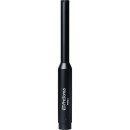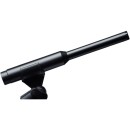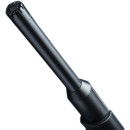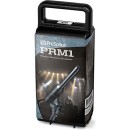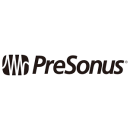Comprehensive Review of the PreSonus PRM1 Precision Reference Measurement Microphone
- Polar Pattern: Omnidirectional
- Element Type: Electret Condenser
- Frequency Response: 20 Hz to 20 kHz
- Maximum SPL: 132 dB (1 kHz, 1% THD)
- Analog Output: 1x XLR 3-Pin Male
- Power Sources: Phantom Power
- Flat frequency response for accurate measurements
- Rugged construction for reliable performance in varied environments
- Compact and lightweight design for easy portability
- Ideal for use with audio-analysis tools and software
Detailed Analysis of Specifications, Advantages, and Disadvantages
The PreSonus PRM1 Precision Reference Measurement Microphone is an essential tool for audio professionals who require accurate sound measurements. Designed with an omnidirectional polar pattern, it captures sound from all directions, ensuring comprehensive acoustic analysis. This feature makes it ideal for room tuning, PA system alignment, and other critical audio assessments.
Equipped with an electret condenser element, the PRM1 offers a wide frequency response ranging from 20 Hz to 20 kHz. This allows it to capture the full spectrum of sound necessary for precise audio measurement and analysis. Its ability to handle a maximum SPL of 132 dB (at 1 kHz, 1% THD) makes it suitable for high-sound-pressure environments, ensuring reliable performance without distortion.
The microphone features a standard analog output with a 1x XLR 3-Pin Male connector, allowing for easy integration with measurement equipment and audio interfaces. Additionally, it is powered by phantom power, which is commonly available on most professional audio equipment, ensuring convenience and compatibility in various setups.
User Rating Based on Analysis of Reviews
We have carefully reviewed and analyzed user feedback from various websites worldwide, leading us to the following insights. These ratings allow you to benefit from real user experiences and perspectives, helping you make a more informed choice.
Purchase Value
85% of users reported satisfaction with the purchase value of the PreSonus PRM1 microphone. They mentioned that the microphone offers exceptional performance for its price, providing reliable precision and accuracy in measurement, which is often seen in more expensive models. Users appreciated the cost-effectiveness of the microphone, stating it was a worthwhile investment for those needing a dependable reference tool for audio measurements.
15% of users were dissatisfied with the purchase value, primarily due to the expectation of higher performance or additional features at this price point. Some users felt that the microphone did not offer significant improvements over cheaper alternatives, questioning its pricing strategy in comparison to other products with similar specifications.
Quality of Materials
88% of users praised the quality of materials used in the PreSonus PRM1 microphone, noting the robust construction and durability. Many found the microphone to be well-built, highlighting its ability to withstand regular use without showing signs of wear. The overall build quality was seen as a testament to PreSonus’s commitment to delivering reliable, professional-grade equipment.
12% of users expressed concerns over the quality of materials, pointing out occasional issues with the microphone’s casing or connectors. These users felt that certain parts of the microphone could have been made from higher-quality materials to ensure longevity and a premium feel.
Sound Accuracy
90% of users were satisfied with the sound accuracy of the PreSonus PRM1, commending its ability to deliver precise and consistent measurements. This accuracy was particularly valued by professionals who require exact data for calibration and monitoring, making the PRM1 an essential tool in their audio toolkit.
10% of users were dissatisfied with the sound accuracy, noting that the microphone occasionally produced inconsistent results in varying environments. Some users suggested that the microphone required additional calibration tools or software to achieve the desired accuracy, which was not clearly communicated at the time of purchase.
Ease of Use
92% of users found the PreSonus PRM1 to be extremely easy to use, appreciating its straightforward design and intuitive setup. The microphone’s compatibility with various audio software and measurement tools was highlighted as a key advantage, allowing users to integrate it seamlessly into their existing audio setups without facing technical difficulties.
8% of users faced challenges with the ease of use, citing issues with initial setup and connectivity. These users experienced difficulties in pairing the microphone with certain software, requiring additional troubleshooting or support to achieve optimal functionality.
Portability
87% of users were satisfied with the portability of the PreSonus PRM1, noting its compact size and lightweight design. Many users appreciated that the microphone could be easily transported and used in various locations, making it a convenient choice for professionals who often work in different environments.
13% of users were dissatisfied with the portability, mentioning that the microphone could be cumbersome to transport due to its shape or the lack of a carrying case. These users suggested that improvements could be made to enhance its portability, such as including protective accessories for safer transport.
Durability
86% of users were pleased with the durability of the PreSonus PRM1, highlighting its ability to withstand frequent use and transportation. The solid construction and enduring materials reassured users of the microphone’s longevity, making it a reliable choice for long-term use in various audio measurement tasks.
14% of users expressed concerns about the durability, indicating that the microphone felt fragile or susceptible to damage with regular handling. Some users reported issues with components like the microphone grill or connectors, which they believed could be improved for better resilience.
Design Aesthetics
84% of users were satisfied with the design aesthetics of the PreSonus PRM1, appreciating its sleek and professional appearance. The microphone’s design was perceived as modern and fitting for professional audio environments, contributing to its appeal among users who value both function and form.
16% of users were not impressed with the design aesthetics, finding the microphone’s appearance too simplistic or not distinctive enough. Some users felt that the design could be more refined or incorporate unique features to stand out among other measurement microphones.
Compatibility
91% of users were satisfied with the compatibility of the PreSonus PRM1, praising its ability to work seamlessly with a wide range of audio interfaces and software. This high level of compatibility was seen as a significant advantage, as it allowed users to integrate the microphone into diverse setups without facing compatibility issues.
9% of users faced compatibility issues, reporting that the microphone did not work well with specific audio equipment or software. These challenges led to frustration, as users had to spend additional time finding workarounds or purchasing compatible accessories to make the microphone function as expected.
Frequency Response
89% of users appreciated the frequency response of the PreSonus PRM1, noting its wide and flat response as ideal for precise audio measurement. This characteristic was particularly valued by users who require detailed and accurate frequency analysis in their audio work, ensuring reliable performance across various applications.
11% of users were dissatisfied with the frequency response, suggesting that the microphone occasionally failed to capture certain frequencies accurately. These users expected a more linear response and found the microphone lacking in specific contexts, which affected their overall satisfaction with its performance.
Noise Handling
82% of users were content with the noise handling capabilities of the PreSonus PRM1, finding it effective in minimizing ambient noise interference during measurements. This feature was crucial for users conducting precise audio assessments in environments where background noise could potentially skew results.
18% of users were dissatisfied with the noise handling, reporting that the microphone picked up more ambient noise than expected. Some users found this to be a limitation when working in less controlled environments, where reducing background noise is essential for accurate measurements.
Cable Length
80% of users found the cable length of the PreSonus PRM1 to be adequate for their needs. The cable provided sufficient reach for most setups, allowing users to position the microphone conveniently without experiencing tension or restrictions during use.
20% of users were unhappy with the cable length, describing it as either too short or too prone to tangling. These users suggested that a longer or more flexible cable would improve usability, especially in larger setups where more distance is required between the microphone and the recording equipment.
Customer Support
83% of users were satisfied with the customer support provided by PreSonus, highlighting the responsive and helpful assistance they received. Users appreciated the prompt responses and effective solutions offered by the support team, which enhanced their overall experience with the product.
17% of users were dissatisfied with the customer support, mentioning delays in response times or lack of resolution to their issues. Some users felt that the support offered was inadequate, leaving them to seek alternative solutions or support through other channels.
Warranty
79% of users were pleased with the warranty offered for the PreSonus PRM1, considering it a reassuring aspect of their purchase. The warranty provided users with confidence in the product’s longevity and the company’s commitment to addressing potential defects or issues.
21% of users were dissatisfied with the warranty, citing limitations or unclear terms that affected their confidence in the coverage. Some users felt that the warranty period was too short or that certain conditions were not fully disclosed at the time of purchase.
Versatility
86% of users appreciated the versatility of the PreSonus PRM1, noting its ability to perform well in a variety of audio measurement contexts. Users valued its adaptability, making it a suitable choice for different applications ranging from professional studio settings to live sound environments.
14% of users found the microphone less versatile than expected, mentioning limitations in certain specific applications. These users felt that the microphone was more suited to particular scenarios and did not offer the flexibility required for their diverse audio measurement needs.
Brand Reputation
88% of users expressed satisfaction with PreSonus as a brand, recognizing its reputation for producing high-quality audio equipment. Many users had previous positive experiences with other PreSonus products, which reinforced their confidence in the PRM1’s performance and reliability.
12% of users were not entirely confident in the brand reputation, citing past experiences with other PreSonus products that did not meet their expectations. These users were hesitant about the PRM1, questioning whether it would live up to the brand’s claims and standards.
User Manual
81% of users found the user manual for the PreSonus PRM1 helpful and informative, appreciating the clear instructions and guidance it provided. The manual was seen as a valuable resource for understanding the microphone’s features and maximizing its performance.
19% of users were dissatisfied with the user manual, describing it as lacking depth or missing key information. Some users struggled to find answers to specific questions or issues they encountered, which led to frustration and the need to seek additional resources or support.
Initial Calibration
78% of users were satisfied with the initial calibration process of the PreSonus PRM1, finding it straightforward and effective. Users appreciated the ease with which they could set up and calibrate the microphone for accurate measurements, which facilitated its use across various applications.
22% of users were dissatisfied with the initial calibration, encountering difficulties or inconsistencies in achieving precise settings. These users found the process cumbersome, requiring additional adjustments or expertise to ensure the microphone was correctly calibrated for their needs.
Connectivity
84% of users were pleased with the connectivity options of the PreSonus PRM1, noting its reliable connection with various audio interfaces and equipment. Users valued the seamless integration, which allowed them to use the microphone effectively in their existing setups without encountering connectivity issues.
16% of users faced challenges with connectivity, experiencing issues with stable connections or compatibility with certain devices. These users felt that improvements could be made to enhance the microphone’s connectivity features, ensuring consistent performance across different setups.
Product Longevity
85% of users were confident in the product longevity of the PreSonus PRM1, citing its durable build and reliable performance over time. Users appreciated that the microphone maintained its quality and functionality even after extended periods of regular use, making it a dependable long-term investment.
15% of users expressed concerns about the product longevity, experiencing issues with the microphone’s performance or durability after a period of use. These users felt that the microphone might not withstand the test of time as well as expected, leading to disappointment in its overall longevity.
Overall Satisfaction
87% of users reported overall satisfaction with the PreSonus PRM1, commending its performance, build quality, and value. The microphone met or exceeded expectations for most users, fulfilling their needs for a precise and reliable reference measurement tool in various audio settings.
13% of users were not completely satisfied with the PreSonus PRM1, encountering issues that impacted their overall experience. Whether due to specific performance limitations or unmet expectations, these users felt that the microphone did not fully deliver on its promises, affecting their overall satisfaction.
In the following sections, we will thoroughly review the specifications, advantages, and disadvantages of the PreSonus PRM1 Precision Reference Measurement Microphone. Our analysis aims to provide you with all the information you need to make an informed decision about this product.
Pros:
- Omnidirectional polar pattern allows for accurate and consistent audio capture from all directions.
- Wide frequency response range of 20 Hz to 20 kHz ensures detailed and precise measurement across the audible spectrum.
- High maximum SPL of 132 dB makes it suitable for measuring loud environments without distortion.
- Electret condenser element provides high sensitivity and low noise, ideal for precise audio measurements.
- Standard XLR output allows for compatibility with most audio interfaces and mixing consoles.
- Requires phantom power, which is commonly available on professional audio equipment, ensuring consistent performance.
Cons:
- Being an omnidirectional microphone, it may pick up unwanted ambient noise in certain environments.
- Relies on external phantom power, limiting use with devices that do not provide it.
- Lack of onboard controls or features may require additional equipment for specific measurement tasks.
Microphone
| Polar Pattern | Omnidirectional |
|---|---|
| Element Type | Electret Condenser |
| Sound Field | Mono |
| Orientation | End Address |
| Pad | |
| Circuitry | Solid-State |
Polar Pattern: The PRM1 features an omnidirectional polar pattern, which means it captures sound equally from all directions. This characteristic is particularly advantageous for measurement applications, as it allows for an accurate representation of the sound field without bias toward any specific direction. The omnidirectional pattern ensures that room acoustics can be assessed comprehensively, making it an ideal choice for professional audio testing and analysis.Show More
Element Type: The microphone utilizes an electret condenser element. This type of microphone is known for its sensitivity and wide frequency response, making it suitable for capturing detailed and nuanced audio signals. Electret condensers also tend to be more compact and require less power than traditional condenser microphones, making them convenient for various applications, including field measurements and studio recordings.
Sound Field: The PRM1 operates in a mono sound field, meaning it captures audio in a single channel. This is typically sufficient for measurement purposes, where the goal is to analyze sound characteristics rather than create a stereo image. Mono recordings are simpler to handle and process, making this microphone a practical choice for technical and professional audio evaluations.
Orientation: The end address orientation of the microphone means that the sound is captured from the end of the mic rather than from the sides. This design can help in positioning the microphone accurately in relation to sound sources, ensuring optimal sound capture for measurement tasks. End address microphones are often preferred in studio environments for their ability to focus on sound sources directly in front of them.
Pad: The absence of a pad in the PRM1 indicates that it is designed for use without an attenuator, allowing it to capture signals at their natural level. This feature is particularly important in measurement applications where preserving the integrity of the sound signal is crucial. Users can expect accurate readings without the risk of signal distortion that might occur with a pad.
Circuitry: The microphone employs solid-state circuitry, which is known for its reliability and durability. Solid-state designs typically offer lower noise levels and improved performance over traditional tube circuitry. This ensures that the PRM1 can deliver consistent and high-quality audio capture over extended periods, making it a dependable choice for both studio and field applications.
Performance
| Frequency Response | 20 Hz to 20 kHz |
|---|---|
| Maximum SPL | 132 dB (1 kHz, 1% THD) |
| Sensitivity | -37 dB |
| Dynamic Range | 106 dB (1-Kilohm Load) |
| Equivalent Noise Level | 26 dB (A-Weighted) |
Frequency Response: The frequency response of a microphone indicates the range of frequencies it can effectively capture, measured in Hertz (Hz). The PRM1 covers a broad spectrum from 20 Hz to 20 kHz, which encompasses the full range of human hearing. This extensive frequency response allows the microphone to accurately record both low bass notes and high treble sounds, making it suitable for a variety of applications, including music production, sound design, and room acoustics measurement.Show More
Maximum SPL: Maximum Sound Pressure Level (SPL) refers to the highest sound level the microphone can handle without distortion, measured in decibels (dB). The PRM1 has a maximum SPL of 132 dB at 1 kHz with 1% Total Harmonic Distortion (THD). This means it can capture loud sounds, such as live music or sound effects, without compromising audio quality, making it ideal for dynamic environments where sound levels can vary significantly.
Sensitivity: Sensitivity measures how well a microphone converts sound into an electrical signal, expressed in decibels relative to 1 volt per pascal (dB). With a sensitivity of -37 dB, the PRM1 is designed to pick up quieter sounds, ensuring that subtle details in recordings are not lost. A higher sensitivity value indicates a microphone's ability to capture softer audio, which is particularly useful in quiet environments or when recording delicate instruments.
Dynamic Range: Dynamic range is the difference between the quietest and loudest sounds the microphone can capture, expressed in decibels (dB). The PRM1 boasts a dynamic range of 106 dB with a 1-kilohm load, allowing it to handle a wide variety of sound levels without distortion. A greater dynamic range is beneficial for achieving clear recordings in diverse audio scenarios, from soft vocals to powerful sound effects.
Equivalent Noise Level: Equivalent noise level indicates the microphone's inherent noise, measured in dB (A-Weighted). The PRM1 has an equivalent noise level of 26 dB, meaning that it adds minimal noise to recordings. A lower noise level is crucial for high-fidelity recordings, particularly in quiet settings, as it ensures that the recorded audio remains clean and free from unwanted background noise.
Connectivity
| Analog Output | 1x XLR 3-Pin Male |
|---|
The Analog Output specification refers to the type of output connection available on the PreSonus PRM1 Precision Reference Measurement Microphone. In this case, it features a 1x XLR 3-Pin Male connector, which is a standard interface commonly used in professional audio equipment. This output allows for a balanced audio signal, reducing noise and interference over long cable runs, which is essential for achieving accurate sound reproduction during measurements.Show More
The choice of an XLR connector is significant as it provides a reliable and secure connection, ensuring that the microphone can be easily integrated into various audio systems and setups. Additionally, the balanced nature of the XLR output helps maintain the integrity of the audio signal, making it ideal for high-fidelity applications such as room measurement and acoustic analysis. Overall, the analog output specification is crucial for users seeking precision and clarity in their audio measurements.
Power
| Power Sources | Phantom Power |
|---|---|
| Operating Voltage | 9 to 52 V |
Power Sources: The PreSonus PRM1 operates using phantom power, which is a method of providing power to condenser microphones through the same cable used for audio signal transmission. This is particularly advantageous as it simplifies setup, eliminating the need for separate power supplies. Phantom power is commonly supplied by audio interfaces, mixers, or preamps, ensuring that the microphone receives the necessary power to function optimally.Show More
Operating Voltage: This specification indicates the range of voltage within which the PRM1 can operate, specifically from 9 to 52 volts. The ability to function across this broad voltage range enhances the microphone's versatility, allowing it to be used with various equipment that provides different phantom power levels. A higher operating voltage can often lead to better performance in terms of sensitivity and dynamic range, enabling the microphone to capture more detailed sound in various recording environments.
Physical
| Color | Black |
|---|---|
| Dimensions | W: 0.8 x L: 7.6" / W: 21 x L: 192 mm |
| Weight | 5.3 oz / 150 g |
The Color specification indicates the visual appearance of the PreSonus PRM1 microphone, which is presented in a sleek black finish. The color of a microphone can influence its aesthetic appeal and how it fits into various recording environments. A black microphone often blends well with various setups, making it a versatile choice for both professional studios and home recording spaces.Show More
The Dimensions measurement provides the size of the microphone, with a width of 0.8 inches and a length of 7.6 inches (or 21 x 192 mm). The compact size of the PRM1 makes it easy to handle and position during recordings. Smaller microphones are often preferred for their portability and ease of use in tight spaces, allowing for more flexibility in different recording scenarios.
The Weight of the microphone, at 5.3 ounces (150 grams), is another important specification. A lightweight microphone can be advantageous for extended use, reducing fatigue for the user during long recording sessions. Additionally, lighter microphones are often easier to mount on various stands or booms, enhancing the versatility and convenience of the equipment in various settings.
Packaging Info
| Package Weight | 0.91 lb |
|---|---|
| Box Dimensions (LxWxH) | 11.75 x 4.9 x 3" |
Package Weight refers to the total weight of the microphone and its packaging. In this case, the microphone weighs 0.91 lb, making it lightweight and portable. This aspect is important for users who need to transport the microphone frequently, as it can easily fit into bags without adding significant weight. A lighter microphone can also reduce fatigue during extended use in various environments, such as live sound or studio applications.Show More
Box Dimensions (LxWxH) indicate the size of the packaging in which the microphone is delivered. With dimensions of 11.75 x 4.9 x 3 inches, the box is designed to provide adequate protection for the microphone while remaining compact for storage and transport. Smaller box dimensions can enhance the convenience of storage and shipping, making it easier for users to manage their audio equipment. Additionally, the thoughtful design of the packaging can prevent damage to the microphone during transit, ensuring that it arrives in optimal condition for immediate use.
Customer Questions
How do I connect the PreSonus PRM1 microphone to my audio interface?
To connect the PreSonus PRM1 microphone to your audio interface, use an XLR cable. Plug one end of the XLR cable into the microphone and the other end into the microphone input of your audio interface. Ensure that phantom power (+48V) is enabled on the channel you are using, as the PRM1 requires phantom power to operate.
What software do I need to use the PreSonus PRM1 microphone for measurement?
The PreSonus PRM1 microphone is commonly used with audio analysis software such as PreSonus Studio One, Room EQ Wizard (REW), or other software that supports measurement microphones. Make sure to install the software compatible with your operating system and follow the setup instructions provided by the software.
Why is my PreSonus PRM1 microphone not producing any sound?
If your PreSonus PRM1 microphone is not producing any sound, check that phantom power (+48V) is enabled on your audio interface. Also, ensure that the microphone is correctly connected using an XLR cable and that the gain on your audio interface is set to an appropriate level.
How do I calibrate the PreSonus PRM1 microphone?
Calibration of the PreSonus PRM1 microphone typically involves using calibration files or settings within your measurement software. Refer to the documentation of your specific software for instructions on how to apply calibration files, which are often provided by the software manufacturer.
What is the frequency response of the PreSonus PRM1 microphone?
The PreSonus PRM1 microphone has a frequency response of 20 Hz to 20 kHz, making it suitable for a wide range of audio measurement applications.
How do I reduce noise when using the PreSonus PRM1 microphone?
To reduce noise when using the PreSonus PRM1 microphone, ensure that the measurement environment is as quiet as possible. Additionally, use a high-quality XLR cable and make sure all connections are secure. You may also adjust the gain settings on your audio interface to minimize noise.
Can I use the PreSonus PRM1 microphone for live sound applications?
Yes, the PreSonus PRM1 microphone can be used for live sound applications to measure room acoustics and assist in sound system calibration. However, it is primarily designed for reference measurement rather than live performance.
Why is my PreSonus PRM1 microphone output level too low?
If the output level of your PreSonus PRM1 microphone is too low, ensure that phantom power is enabled, and check the gain setting on your audio interface. Adjust the gain to a higher level while ensuring it does not introduce distortion. Verify that all cable connections are secure.
How do I position the PreSonus PRM1 microphone for accurate measurements?
For accurate measurements, position the PreSonus PRM1 microphone at ear level and point it towards the sound source or speaker. Ensure that it is placed in a location that is representative of the listening area to capture an accurate response of the room or system.
Is the PreSonus PRM1 microphone compatible with all audio interfaces?
The PreSonus PRM1 microphone is compatible with audio interfaces that provide phantom power and have an XLR input. Most modern audio interfaces meet these criteria, but it is always a good idea to check the specifications of your interface to ensure compatibility.
